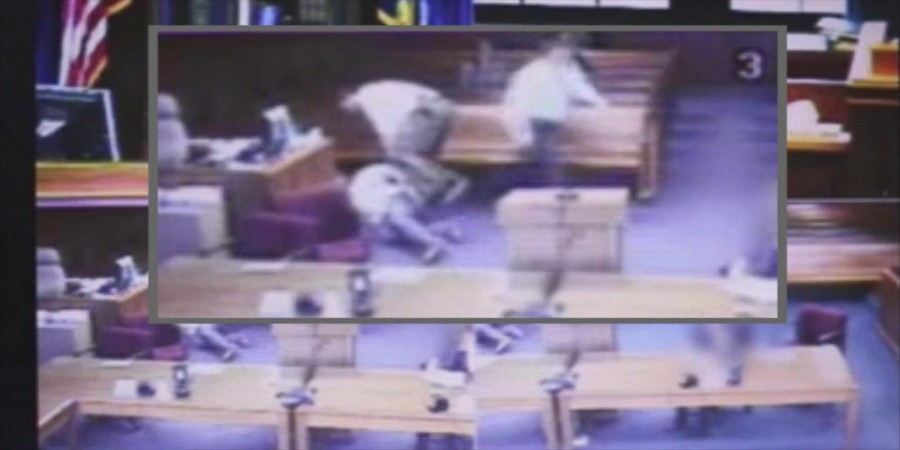

The Case of Jacob Larson and Judge McBain: Controversy and Judicial Conduct
In 2016, Jacob Larson's case in Jackson County, Michigan, made national headlines for a rather unexpected reason – a courtroom scuffle involving the presiding judge, John McBain. This incident brought to light significant questions about judicial conduct and the potential for abuse of power.
Background
- Charges: Jacob Larson was brought before Judge McBain for violating a personal protection order (PPO) by repeatedly contacting and harassing his ex-girlfriend via social media.
- The Altercation: During the proceedings, a verbal exchange between Larson and McBain escalated. McBain threatened Larson with an increased jail sentence, prompting Larson to resist the court officer's attempts to handcuff him. Judge McBain left the bench, removed his robe, and physically assisted in subduing Larson.
Public Response & Aftermath
- Viral Video: Footage of the altercation quickly went viral, sparking intense debate about Judge McBain's actions.
- Criticism: Critics argued that McBain's involvement violated the principle of an impartial judge and that his actions constituted abuse of power.
- Investigation: The Michigan Judicial Tenure Commission launched an investigation into McBain's conduct.
- Ruling: The Commission reprimanded McBain, stating his actions brought the judiciary into disrepute and raised concerns about his temperament.
Broader Implications
The Jacob Larson case underscores broader issues surrounding judicial conduct and how to balance courtroom authority with respect for individual rights. Here are some points to consider:
- Maintaining Impartiality: Judges are expected to be unbiased arbiters, their conduct should never be perceived as favoring one side over another.
- De-escalation: In tense courtroom situations, judges have a responsibility to prioritize de-escalation techniques to maintain order and ensure a fair and just process.
- Addressing Power Imbalance: Courtrooms have inherent power dynamics. Procedures and guidelines should protect the rights of defendants, even those who are disruptive.
The outcome of the case highlights a complex situation. While judges have the authority to maintain courtroom order, their actions must be proportionate, respectful, and always uphold the integrity of the justice system.
References
- Newsweek - Court Says Judge Overstepped with Ruling, May Be In 'Wrong Line of Work': https://www.newsweek.com/court-says-judge-overstepped-ruling-may-wrong-line-work-1675920
- The Washington Post - Michigan judge tackles man in court, helps restrain him with bailiff’s handcuffs: [invalid URL removed]
- Michigan Judicial Tenure Commission: [invalid URL removed]
Let me know if you'd like more information on the concept of judicial conduct or examples of similar cases.
Popular articles

Apr 11, 2024 07:40 PM

May 25, 2024 08:09 PM

Apr 11, 2024 07:22 PM

Apr 10, 2024 07:59 PM

Mar 14, 2024 07:53 PM
Comments (0)